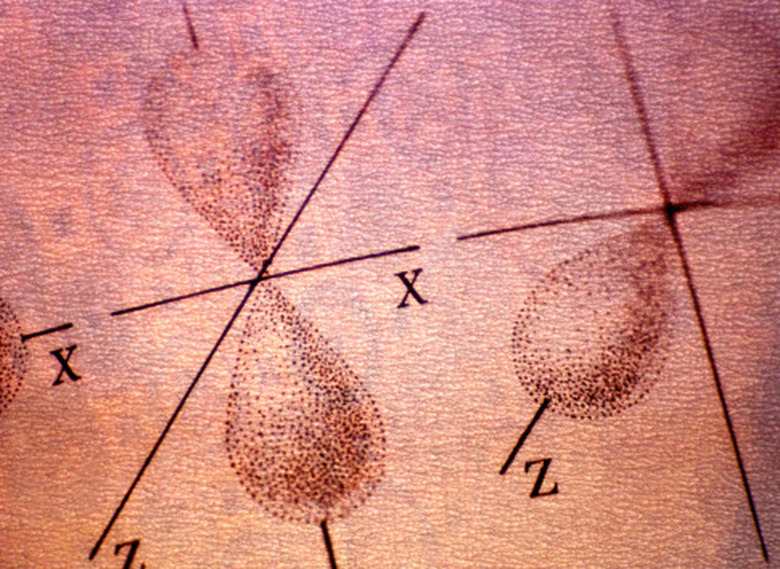Materials That Can Be Magnetized
Many materials have magnetic properties and an ability to be magnetized. Two classes of materials with magnetic properties are paramagnetic and ferromagnetic materials. These materials have natural magnetic properties that allow them to be attracted by a magnet. Paramagnetic materials are weakly attracted to magnets and ferromagnetic materials are strongly attracted to magnets. These properties originate from their subatomic structures, which determine what materials can be strongly magnetized and what can only be weakly magnetized.
Magnetic Properties
Magnetic Properties
The core of what allows a material to be magnetized lies in its subatomic structure where electrons spin around the nucleus of the material's atoms. A spinning electron creates a magnetic field called a dipole that, like a regular bar magnet, has both north and south poles. When the majority of electrons spin in the same direction, the material has the potential to be magnetized. However, if a material does not have a large portion of its electrons spinning in the same direction, then it has less potential to be magnetized because oppositely spinning electrons neutralize each other's individual magnetic fields. An example of a material that has the majority of its electrons spinning in the same direction and can be strongly magnetized is iron. An example of a material that does not have a majority of its electrons spinning in the same direction and can only be weakly magnetized is aluminum.
Ferromagnetic Materials
Ferromagnetic Materials
Due to the subatomic structures of their atoms, ferromagnetic materials such as iron, nickel gadolinium and cobalt are naturally attracted to magnets. Typically, these materials have to undergo a process such as heating at a high temperature followed by cooling while under the influence of a strong magnetic field in order to be magnetized as a permanent magnet. Less physical methods such as stroking the material with a magnet or striking it with a hammer can make these materials into temporary magnets. Both physical processes cause the material's electron-induced magnetic fields to align with each other.
Paramagnetic Materials
Paramagnetic Materials
Paramagnetic materials are only weakly attracted to magnets due to the paramagnetic materials' subatomic structure consisting of only a relatively few free electrons spinning in the same direction. Therefore, paramagnetic materials such as copper, aluminum, platinum and uranium make much weaker magnets than those made by ferromagnetic materials.
Alloyed Materials
Alloyed Materials
Alloys of ferromagnetic and paramagnetic materials can vary with their potential to be magnetized. For example, although nickel is a ferromagnetic material, a 5-cent piece is not attracted to a magnet. The U.S. 5-cent coin is an alloy of 20 percent nickel and 80 percent copper. Stainless steel is another example of a material that is not attracted to a magnet because it is an alloy of ferromagnetic iron with chromium and numerous other paramagnetic materials.
However, some alloys of ferromagnetic and paramagnetic materials do make strong magnets. One example is alnico, which in one form consists of the ferromagnetic metals iron, nickel and cobalt with the paramagnetic materials aluminum and copper.
References
- "The World Book Encyclopedia"; Magnet; 2009
- "Magnet Science"; Glen Vecchione; 1995
- "Introduction to Magnetic Materials"; B.D. Cullity, C.D. Graham; 2009
Cite This Article
MLA
Boyer, Timothy. "Materials That Can Be Magnetized" sciencing.com, https://www.sciencing.com/materials-can-magnetized-8412938/. 24 April 2017.
APA
Boyer, Timothy. (2017, April 24). Materials That Can Be Magnetized. sciencing.com. Retrieved from https://www.sciencing.com/materials-can-magnetized-8412938/
Chicago
Boyer, Timothy. Materials That Can Be Magnetized last modified March 24, 2022. https://www.sciencing.com/materials-can-magnetized-8412938/



